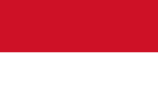Jakarta
| Jakarta Daerah Khusus Ibukota Jakarta |
|||
| Special Capital Territory of Jakarta | |||
 |
|||
|
|||
| Nickname(s): Big Durian | |||
| Motto: Jaya Raya (English): "Prosperous and Great" |
|||
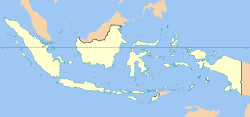 Jakarta
|
|||
| Coordinates: | |||
| Country | Indonesia | ||
|---|---|---|---|
| Province | Jakarta | ||
| Government | |||
| - Type | Special administrative area | ||
| - Governor | Fauzi Bowo | ||
| Area | |||
| - City | 750.28 km² (289.7 sq mi) | ||
| Elevation | 4 m (13 ft) | ||
| Population (2008) | |||
| - City | 8,489,910 | ||
| - Density | 11,315.7/km² (29,307.5/sq mi) | ||
| - Metro | 13,194,000 | ||
| [1] | |||
| Time zone | WIB (UTC+7) | ||
| Area code(s) | +6221 | ||
| Website: www.jakarta.go.id | |||
Jakarta (also DKI Jakarta), is the capital and largest city of Indonesia. It also has a greater population than any other city in Southeast Asia. It was formerly known as Sunda Kelapa (397-1527), Jayakarta (1527-1619), Batavia (1619-1942), and Djakarta (1942-1972). Located on the northwest coast of Java, it has an area of 661.52 square kilometres (255.41 sq mi) and a population of 8,489,910[1]. Jakarta is the country's economic, culture and political center. Jakarta currently is the twelfth largest city in the world. Its metropolitan area, Jabodetabek, contains more than 23 million people, and is part of an even larger Jakarta-Bandung megalopolis.
Jakarta is served by the Soekarno-Hatta International Airport and Tanjung Priok harbour. Since 2004, Jakarta, while under the governance of Sutiyoso, has built a new bus system known as "TransJakarta" or "Busway", and is now planning to expand the number of routes. The city had hoped to establish its newest transportation system, the Jakarta Monorail, in 2007, but the project was abandoned by the developer, PT Jakarta Monorail, in March 2008. Jakarta is the location of the Jakarta Stock Exchange, the Bank of Indonesia, and the National Monument, or Tugu Monas.
Contents |
Geography

Jakarta is located on the northwestern coast of Java Island, at the mouth of the Ciliwung River on Jakarta Bay, which is an inlet of the Java Sea. The northern part of Jakarta is constituted on a plain land, approximately eight meters above the sea level. This contributes to the frequent flooding. The southern parts of the city are hilly. There are about 13 rivers flowing through Jakarta, mostly flowing from the hilly southern parts of the city northwards towards the Java Sea. The most important river is the Ciliwung river, which divides the city into the western and eastern principality. The city border is the province of West Java on its east side and the province of Banten on its west side.
The thousand islands, which is a part of the administrative region of Jakarta, is located in the Jakarta Bay. These 105 islands are located 45 kilometres (28 mi) on the north part of the city.
Climate
Jakarta has a hot and humid equatorial/tropical climate (Af) according to the Köppen climate classification system. Located in the western-part of Indonesia, Jakarta's wet season rainfall peak is January with average monthly rainfall of 350 millimetres (14 in), and its dry season low point is August with a monthly average of 60 millimetres (2.4 in).[2] The city is humid throughout the year with daily temperature range of 25° to 38°C (77°-100°F).[3]
History
-
For more details on this topic, see History of Jakarta.


The old name of Jakarta was Sunda Kelapa. The earliest record mentioning this area as a capital city can be traced to the Indianized kingdom of Tarumanagara as early as the fourth century. In AD 39, King Purnawarman established Sunda Pura as a new capital city for the kingdom, located at the northern coast of Java.[4] Purnawarman left seven memorial stones with inscriptions bearing his name spread across the area, including the present-day Banten and West Java provinces. The Tugu Inscription is considered the oldest of all of them.[5]
After the power of Tarumanagara declined, all of its many territories, including Sunda Pura, became part of the Kingdom of Sunda. The harbour area were renamed Sunda Kelapa as written in a Hindu monk's lontar manuscripts, which are now located at the Bodleian Library of Oxford University in England, and travel records by Prince Bujangga Manik.[6] By the 14th century, Sunda Kelapa became a major trading port for the kingdom. The first European fleet, four Portuguese ships from Malacca, arrived in 1513 when the Portuguese were looking for a route for spices, especially black pepper.[7]
The Kingdom of Sunda made a peace agreement with Portugal by allowing the Portuguese to build a port in 1522 in order to defend against the rising power of the Sultanate of Demak from central Java.[8] In 1527, Fatahillah, a Sumatran Malay warrior from Demak attacked Kingdom of Sunda and succeeded in conquering the harbour on June 22 1527, after which Sunda Kelapa was renamed Jayakarta.[8]

Through the relationship with Prince Jayawikarta from the Sultanate of Banten, Dutch ships arrived in Jayakarta in 1596. In 1602, the British East India Company's first voyage, commanded by Sir James Lancaster, arrived in Aceh and sailed on to Banten where they were allowed to build a trading post. This site became the center of British trade in Indonesia until 1682.[9]
Apparently, Jayawikarta also made a trading connection with the English merchants, rivals of the Dutch, by allowing them to build houses directly across from the Dutch buildings in 1615.[10] When relations between Prince Jayawikarta and the Dutch later deteriorated, Jayawikarta's soldiers attacked the Dutch fortress. But even with the help of fifteen British ships, Prince Jayakarta's army wasn't able to defeat the Dutch, in part owing to the timely arrival of Jan Pieterszoon Coen (J.P. Coen). The Dutch burned the English fort, and forced the English retreat on their ships. With this victory, Dutch power in the area was consolidated. In 1619 they renamed the city "Batavia."
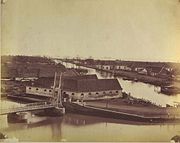
Within Batavia's walls, wealthy Dutch built tall houses and pestilential canals. Commercial opportunities attracted Indonesian and especially Chinese immigrants, the increasing numbers creating burdens on the city. Tensions grew as the colonial government tried to restrict Chinese migration through deportations. On 9 October 1740, 5,000 Chinese were massacred and the following year, Chinese inhabitants were moved to Glodok outside the city walls.[11] The city began to move further south as epidemics in 1835 and 1870 encouraged more people to move far south of the port. The Koningsplein, now Merdeka Square, was completed in 1818, and Kebayoran Baru was the last Dutch-built residential area.[11]
The city was renamed "Jakarta" by the Japanese during their World War II occupation of Indonesia. Following World War II, Indonesian Republicans withdrew from allied-occupied Jakarta during their fight for Indonesian independence and established their capital in Yogyakarta. In 1950, once independence was secured, Jakarta was once again made the national capital.[11] Indonesia's founding president, Sukarno, envisaged Jakarta as a great international city. He instigated large government-funded projects undertaken with openly nationalistic and modernist architecture.[12][13] Projects in Jakarta included a clover-leaf highway, a major boulevard (Jalan Sudirman), monuments such as The National Monument, major hotels, and a new parliament building.
In 1966, Jakarta was declared a "special capital city district" (daerah khusus ibukota), thus gaining a status approximately equivalent to that of a state or province.[14] Lieutenant General Ali Sadikin served as Governor from this time to 1977; he rehabilitated roads and bridges, encouraged the arts, built several hospitals, and a large number of new schools. He also cleared out slum dwellers for new development projects—some for the benefit of the Suharto family[15][16]—and tried to eliminate rickshaws and ban street vendors. He began control of migration to the city in order to stem the overcrowding and poverty.[17] Land redistribution, structural adjustment, and foreign investment contributed to a real estate boom which changed the face of the city.[18] The boom ended with the 1997/98 East Asian Economic crisis putting Jakarta at the center of violence, protest, and political maneuvering. Long-time president, Suharto, began to lose his grip on power. Tensions reached a peak in the Jakarta riots of May 1998, when four students were shot dead at Trisakti University by security forces; four days of riots and violence ensued resulting in the loss of an estimated 1,200 lives and 6,000 buildings damaged or destroyed.[19] Suharto resigned as president, and Jakarta has remained the focal point of democratic change in Indonesia.[20] A number of Jemaah Islamiah-connected bombings have occurred in the city since 2000.[11]
Administration
Officially, Jakarta is not a city, but rather a province with special status as the capital of Indonesia. It is administered much like any other Indonesian province. For example: Jakarta has a governor (instead of a mayor), and is divided into several sub-regions with their own administrative systems. Jakarta, as a province, is divided into five cities (kota), formerly municipalities, each headed by a mayor, and one regency (kabupaten) headed by a regent. In August 2007, Jakarta held its first ever election to pick a governor; the election was won by Fauzi Bowo. The city's governors have previously been appointed by local parliament. The poll is part of a country-wide decentralization drive, allowing for direct local elections in several areas.[21]
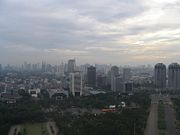
List of cities of Jakarta:
- Central Jakarta (Jakarta Pusat)
- East Jakarta (Jakarta Timur)
- North Jakarta (Jakarta Utara)
- South Jakarta (Jakarta Selatan)
- West Jakarta (Jakarta Barat)
The only regency of Jakarta is:
- Thousand Islands (Kepulauan Seribu), formerly a subdistrict of North Jakarta.
Culture

As the economic and political capital of Indonesia, Jakarta attracts many foreign as well as domestic immigrants. As a result, Jakarta has a decidedly cosmopolitan flavor and a diverse culture. Many of the immigrants are from the other parts of the island of Java, bringing along a mixture of dialects of the Javanese and Sundanese languages, as well as their traditional foods and customs.
Jakarta is sometimes called "The Big Durian" by foreigners resident in the city. The durian is a tropical fruit with a distinctive odor and acquired taste. A bustling urban metropolis, Jakarta is known for its overcrowding, traffic congestion, and income disparity.
The Betawi (Orang Betawi, or "people of Batavia") is a term used to describe the descendants of the people living around Batavia and recognized as a tribe from around the 18th-19th century. The Betawi people are mostly descended from various Southeast Asian ethnic groups brought or attracted to Batavia to meet labor needs, and include people from various parts of Indonesia.[22] The language and culture of these immigrants are distinct from those of the Sundanese or Javanese. The language is more based on East Malay dialect and enriched by loan words from Javanese, Chinese, and Arab. Nowadays, the Jakarta-dialects used by people in Jakarta is loosely based on Betawi Language.
There has also been a significant Chinese community in Jakarta for many centuries. Officially, they make up 6% of the Jakarta population, though this number may be under-reported.[23]
Jakarta has several performance centers, such as the Senayan center. Traditional music is often found at high-class hotels, including wayang and gamelan performances. As the nation's largest city and capital, Jakarta has lured much national and regional talent who hope to find a greater audience and more opportunities for success.
Ironically, the Betawi arts are rarely found in Jakarta due to their infamous low-profile and most of them had moved to the border of Jakarta, ridden by the wave of immigrant. It is easier to find Java or Minang based wedding ceremonial instead of Betawi wedding in Jakarta. It is easier to find Javanese Gamelan instead of Gambang Kromong (mixture between Betawi and Chinese music) or Tanjidor (mixture between Betawi and Portuguese music) or Marawis (mixture between Betawi and Yaman music). However, some festivals such as Jalan Jaksa Festival or Kemang Festival tried to preserve the Betawi art by inviting the artist to do some performances.[24]
The concentration of wealth and political influence in the city means that it has much more noticeable foreign influence on its landscape and culture, an effect illustrated by the presence in the city of many major international fast-food chains, for example.
Transportation
One of the most populous cities in the world, Jakarta is strained by transportation problems."[25] In Indonesia most communal transport is provided by bemos, which are privately run minibuses.
Road transport
Despite the presence of many wide roads, Jakarta suffers from congestion due to heavy traffic, especially in the central business district. To reduce traffic jams, some major roads in Jakarta have a 'three in one' rule during rush hours, first introduced in 1992, prohibiting fewer than three passengers per car on certain roads.
Jakarta's roads are notorious for undisciplined driver behavior; transportation laws are broken with impunity and police bribery is commonplace. The painted lines on the road are regarded as mere suggestions as vehicles often travel four or five abreast on a typical two-lane road. It is not uncommon to encounter a vehicle traveling the wrong direction in a given traffic flow. Furthermore, in recent years the number of motorcycles on the streets has been growing almost exponentially. The vast sea of small, 100-200cc motorcycles, many of which have 2-stroke motors, create much of the traffic, noise and air pollution that plague Jakarta.
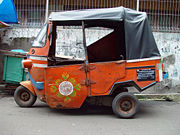
Auto rickshaws, called bajaj (pronounced badge-eye), provide local transportation in the back streets of some parts of the city. From the early 1940s to 1991 they were a common form of local transportation in the city. In 1966, an estimated 160,000 rickshaws were operating in the city; as much as fifteen percent of Jakarta's total workforce was engaged in rickshaw driving. In 1971, rickshaws were banned from major roads, and shortly thereafter the government attempted a total ban, which substantially reduced their numbers but did not eliminate them. An especially aggressive campaign to eliminate them finally succeeded in 1990 and 1991, but during the economic crisis of 1998, some returned amid less effective government attempts to control them.[26]
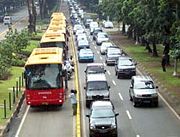
The TransJakarta service operates on a special bus-line called the busway. The busway network is optimized for busy city routes and is a relatively effective alternative for travel in Jakarta. Construction of the 2nd and 3rd corridor routes of the busway was completed in 2006, serving the route from Pulo Gadung to Kalideres. The busway serving the route from Blok M to Jakarta Kota has been operational since January 2004.
An outer ring road is now being constructed and is partly operational from Cilincing-Cakung-Pasar Rebo-Pondok Pinang-Daan Mogot-Cengkareng. A toll road connects Jakarta to Soekarno-Hatta International Airport in the north of Jakarta. Also connected via toll road is the port of Merak and Tangerang to the west and Bekasi, Cibitung and Karawang, Purwakarta and Bandung to the east.
Rail and Waterway
While numerous railways serve Jakarta, they are inadequate to the residents' transport needs. During peak hours, the number of passengers greatly exceeds the system's capacity. The railroads connect Jakarta to its neighboring regions: Depok and Bogor to the south, Tangerang and Serpong to the west, and Bekasi, Karawang, and Cikampek to the east. The major rail stations are Gambir, Jatinegara, Pasar Senen, Manggarai, Tanah Abang, and Jakarta Kota.
Two lines of the Jakarta Monorail are under construction: the green line serving Semanggi-Casablanca Road-Kuningan-Semanggi and the blue line serving Kampung Melayu-Casablanca Road-Tanah Abang-Roxy. In addition, there are plans for a two-line subway (MRT) system, with a north-south line between Kota and Lebak Bulus, with connections to both monorail lines; and an east-west line, which will connect with the north-south line at the Sawah Besar station. The current project, which began in 2005, has been delayed due to a lack of funds, and the project has been abandoned by the developer PT Jakarta Monorail in March 2008. The government is now looking for new investors.
On 6 June 2007, the city administration started to introduce the Waterway, a new river boat service along the Ciliwung river.[25] The move aims to reduce the traffic snarls in Jakarta.[27]
On 30 November 2007, KRL(Commuter Train) Ciliwung Blue Line began operation.[28] It serves Jakarta's circle line, which was used in the 80s. The fare price is Rp5000,00. It serves Manggarai, Mampang, Karet, Jend. Sudirman Road, Duri, Angke, Kampung Bandan, Rajawali, Kemayoran, Pasar Senen, Gang Sentiong, Kramat, Pondok Jati, and Jatinegara. The train can carry 400 passengers.[29]
Air
Soekarno-Hatta International Airport (CGK) is the primary airport for Jakarta and Indonesia alike. It is used by both private and commercial carriers connecting Jakarta with other Indonesian cities. It is also Indonesia's main international gateway. The airport is divided into three separate terminals. Terminal 1 serves all domestic airliners except Garuda Indonesia. Terminal 2 serves all foreign carriers and Garuda Indonesia (both domestic and international routes). Terminal 3 serves for hajj pilgrimage flights and for transnational migrant laborers.[30] A second airport, Halim Perdanakusuma International Airport(HLP) serves mostly private and presidential flights.
Education
- See also: List of universities in Indonesia
Jakarta is the home of many universities, the oldest of which are state-run University of Indonesia(UI)[31] and the privately-owned Universitas Nasional (UNAS)[32]. There are also many other private universities in Jakarta, such as Universitas Trisakti [33] and Universitas Tarumanagara, which are two of the few largest private universities in Jakarta. As the largest city and the capital, Jakarta houses a large number of students from various parts of Indonesia, many of whom reside in dormitories or home-stay residences. Similar to other large cities in developing Asian countries, there are many professional schools. For basic education, there are a variety of primary and secondary schools, tagged with public (national), private (national and bi-lingual national plus) and international schools. Two of the major international schools located in Jakarta are the Jakarta International School and the British International School, Jakarta. BIS is a SEASAC and a FOBISSEA school.
Sports
Since Soekarno's era, Jakarta has often been chosen as the venue for international sport events, such as being the host of Asian Games in 1962, host of Asian Cup 2007 and several times hosting the regional-scale Sea Games. Jakarta is also home of several professional soccer clubs. The most popular of them is Persija, which regularly plays its matches in the Lebak Bulus Stadium. Another premiere division team is Persitara. The champions of Galatama competition, Warna Agung and Jayakarta soccer club, also homebase in Jakarta. The biggest stadium in Jakarta is the Bung Karno Stadium with a capacity of 100,000 seats[34]. For basketball, the Kelapa Gading Sport Mall in Kelapa Gading, North Jakarta, with a capacity of 7,000 seats, is the home arena of the Indonesian national basketball team. Many international basketball matches are played in this stadium. The Senayan sports complex comprises several sport venues, which include the Bung Karno soccer stadium, Madya Stadium, Istora Senayan, a shooting range, a tennis court and a golf driving range. The Senayan complex was built in 1959 to accommodate the Asian Games in 1962. In 2011, Jakarta, together with Bandung, will once again host the Southeast Asian Games. Preparations to host the event have started since the conclusion of the 2007 Thailand Southeast Asian Games. The Indonesian Polo Association, as the governing body of polo in Indonesia, have stated its commitment to host the SEA Games polo tournament in Indonesia after polo is confirmed to be absent in the 2009 Laos Southeast Asian Games. The Indonesian Polo Team were placed last in the 2007 Southeast Asian Games.
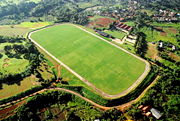
Media
Newspapers
Jakarta has several daily newspapers such as Bisnis Indonesia, Investor Daily, Jakarta Globe, The Jakarta Post, Indo Pos, Seputar Indonesia, Kompas, Media Indonesia, Republika, Pos Kota, Warta Kota, Lampu Merah and Suara Pembaruan.
Television
Government television: TVRI.
Private national television: TPI, RCTI, Metro TV, Indosiar, StarANTV, SCTV, Trans TV, TV ONE (used to be Lativi), Trans 7, and Global TV.
Local television: Jak-TV, O-Channel, and Space-Toon.
Cable television: First Media, TelkomVision Satellite television: Indovision, Astro Nusantara, TelkomVision, Aora TV
Radio
Problems
Population in excess of infrastructure
Like many big cities in developing countries, Jakarta suffers from major urbanization problems. The population has risen sharply from 1.2 million in 1960 to 8.8 million in 2004, counting only its legal residents. The population of greater Jakarta is estimated at 23 million, making it the fourth largest urban area in the world. The rapid population growth has outgrown the government's ability to provide basic needs for its residents. As the third biggest economy in Indonesia, Jakarta has attracted a large number of visitors. The population during weekdays is almost double that of weekends, due to the influx of residents residing in other areas of Jabotabek. Because of government's inability to provide adequate transportation for its large population, Jakarta also suffers from severe traffic jams that occur almost every day. Air pollution and waste management are also severe problems. By 2025 the population of Jakarta may reach 24.9 million, not counting millions more in surrounding areas.[35]
Sanitation
Surveys show that "less than a quarter of the population is fully served by improved water sources. The rest rely on a variety of sources, including rivers, lakes and private water vendors. Some 7.2 million people are [without clean water]."[36]
Flooding
During the wet season, Jakarta suffers from flooding due to clogged sewage pipes and waterways, deforestation near rapidly urbanizing Bogor and Depok, and the fact that 40% of it is below sea level. Terrible floods occurred in 1996[37][38] when 5,000 hectares of land were flooded [39] and 2007.[40] Losses from infrastructure damage and state revenue were at least 5.2 trillion rupiah (572 million US dollars) and at least 85 people were killed [41] and about 350,000 people forced from their homes.[42]. Approximately 70% to 75% of Jakarta's total area was flooded and water up to 4 meters deep in parts of city.[43] [44] [45]
The informal sector
In September 2007, a new law was brought into effect which attempted to regulate aspects of public order. It forbids the giving of money to beggars, buskers and hawkers, bans squatter settlements on river banks and highways, and prohibits spitting and smoking on public transportation. Unauthorized people cleaning car windscreens and managing traffic at busy intersections will also be penalized. Critics of the new legislation claim that such laws will be difficult to enforce and ignore the desperate poverty of many of the capital's inhabitants.[46]
Sister relationships
Jakarta has sister relationships with a number of towns and regions worldwide:
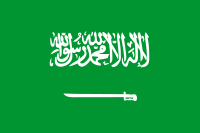 Jeddah, Saudi Arabia
Jeddah, Saudi Arabia Beijing, China
Beijing, China Berlin, Germany
Berlin, Germany Istanbul, Turkey
Istanbul, Turkey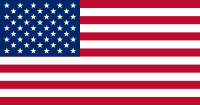 Los Angeles, United States
Los Angeles, United States Paris, France
Paris, France Rotterdam, Netherlands
Rotterdam, Netherlands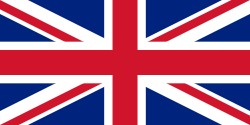 Manchester, United Kingdom
Manchester, United Kingdom Seoul, South Korea
Seoul, South Korea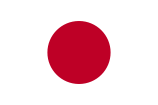 Tokyo, Japan
Tokyo, Japan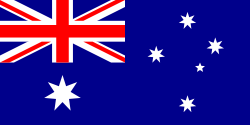 State of New South Wales, Australia
State of New South Wales, Australia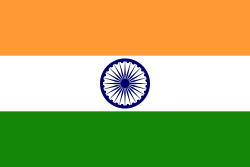 New Mumbai, India
New Mumbai, India
References
- ↑ 1.0 1.1 Penduduk Provinsi DKI Jakarta: Penduduk Provinsi DKI Jakarta Januari 2008 (Demographics and Civil Records Service: Population of the Province of Jakarta January 2008
- ↑ Turner, Peter (1997). Java (1st edition ed.). Melbourne: Lonely Planet Publications. pp. 37. ISBN 0-86442-314-4.
- ↑ "Jakarta: When to Go". Lonely Planet. Lonely Planet Publications (2008). Retrieved on 2008-10-06.
- ↑ Sundakala: cuplikan sejarah Sunda berdasarkan naskah-naskah “Panitia Wangsakerta” Cirebon. Yayasan Pustaka Jaya, Jakarta. 2005.
- ↑ The Sunda Kingdom of West Java From Tarumanagara to Pakuan Pajajaran with the Royal Center of Bogor. Yayasan Cipta Loka Caraka. 2007.
- ↑ Three Old Sundanese Poems. KITLV Press. 2007.
- ↑ Sumber-sumber asli sejarah Jakarta, Jilid I: Dokumen-dokumen sejarah Jakarta sampai dengan akhir abad ke-16. Cipta Loka Caraka. 1999.
- ↑ 8.0 8.1 "History of Jakarta". BeritaJakarta.
- ↑ Ricklefs, M.C. (1993). A History of Modern Indonesia Since c.1300 (2nd edition ed.). London: MacMillan. pp. p.29. ISBN 0-333-57689-6.
- ↑ Heuken, Adolf (2000). Sumber-sumber asli sejarah Jakarta Jilid II: Dokumen-dokumen Sejarah Jakarta dari kedatangan kapal pertama Belanda (1596) sampai dengan tahun 1619 (Authentic sources of History of Jakarta part II: Documents of history of Jakarta from the first arrival of Dutch ship (1596) to year 1619). Jakarta: Yayasan Cipta Loka Caraka.
- ↑ 11.0 11.1 11.2 11.3 Witton, Patrick (2003). Indonesia. Melbourne: Lonely Planet Publications. pp. 138–139. ISBN 1-74059-154-2.
- ↑ Kusno, Abidin (2000). Behind the Postcolonial: Architecture, Urban Space and Political Cultures. New York City: Routledge isbn=0415236150.
- ↑ Schoppert, P.; Damais, S. (1997). Java Style. Paris: Didier Millet. ISBN 962-593-232-1.
- ↑ "Jakarta". Encyclopedia Britannica Online. Encyclopædia Britannica, Inc. Retrieved on 2007-09-17.
- ↑ Douglas, M. (1989). "The Environmental Sustainability of Development. Coordination, Incentives and Political Will in Land Use Planning for the Jakarta Metropolis". Third World Planning Review 11 (2 pages=pp. 211-238).
- ↑ Douglas, M. (1992). "The Political Economy of Urban Poverty and Environmental Management in Asia: Access, Empowerment and Community-based Alternatives". Environment and Urbanization 4 (2): 9–32.
- ↑ Turner, Peter (1997). Java (1st edition). Melbourne: Lonely Planet. pp. 315. ISBN 0-86442-314-4.
- ↑ Sajor, Edsel E. (2003). "Globalization and the Urban Property Boom in Metro Cebu, Philippines". Development and Change 34 (4): 713–742. doi:. http://www.blackwell-synergy.com/doi/abs/10.1111/1467-7660.00325?cookieSet=1&journalCode=dech.
- ↑ Friend, Theodore (2003). Indonesian Destinies. Harvard University Press. p. 329. ISBN 0-674-01137-6.
- ↑ Friend, T. (2003). Indonesian Destinies. Harvard University Press. ISBN 0-674-01137-6.
- ↑ "Jakarta holds historic election". BBC News. BBC (2007-08-08).
- ↑ The Betawi - due to their diverse origins - play a major role concerning ethnic and national identity in contemporary Jakarta; see Knörr, Jacqueline: Kreolität und postkoloniale Gesellschaft. Integration und Differenzierung in Jakarta, Campus Verlag: Frankfurt a.M. & New York, 2007, ISBN 978-3-593-38344-6
- ↑ Johnston, Tim (2005-03-03). "Chinese diaspora: Indonesia". BBC News. BBC.
- ↑ Knörr, Jacqueline (2007). Kreolität und postkoloniale Gesellschaft. Integration und Differenzierung in Jakarta. Frankfurt: Campus Verlag. ISBN 978-3-593-38344-6.
- ↑ 25.0 25.1 Jakarta begins river boat service.
- ↑ Azuma, Yoshifumi (2003). Urban peasants: beca drivers in Jakarta. Jakarta: Pustaka Sinar Harapan.
- ↑ "Jakarta gets its first klong taxis". Bangkok Post. The Post Publishing Public Co.
- ↑ "KRL Dalam Kota "Ciliwung Blue Line" Dioperasikan" (in Indonesian). ANTARA News. ANTARA (2007-11-23).
- ↑ "KRL Dalam Kota Akan Terintegrasi dengan Moda Transportasi Lain". Berita Aktual (2007-12-01).
- ↑ Silvey, R. (2007). "Unequal Borders: Indonesian Transnational Migrants at Immigration Control". Geopolitics 12 (2): 265–279.
- ↑ Universitas Indonesia | The University with world class perspectives | Posts
- ↑ Web Universitas Nasional 1949
- ↑ [http://www.trisakti.ac.id
- ↑ Football stadiums of the world - Stadiums in Indonesia
- ↑ Far Eastern Economic Review, Asia 1998 Yearbook, p. 63.
- ↑ United Nations Human Development Report 2006, p. 39 [1]
- ↑ Asiaviews - Asian News
- ↑ "Floods in DKI Jakarta Province, updated 19 Feb 2007 Emergency Situation Report No. 6". ReliefWeb (2007-02-19).
- ↑ "1996 2007 Global Register of Major Flood Events". Dartmouth Flood Observatory. Dartmouth College.
- ↑ Bloomberg.com: Asia
- ↑ Three killed, 90,000 evacuated in Jakarta floods: officials - Yahoo! News
- ↑ Disease fears as floods ravage Jakarta
- ↑ Jakarta Flood Feb 2007 « (Geo) Information for All
- ↑ http://www.dartmouth.edu/~floods/Archives/2007sum.htm
- ↑ Art and Nature Photography
- ↑ http://news.bbc.co.uk/1/hi/world/asia-pacific/6989211.stm; "Condemned Communities: Forced Evictions in Jakarta" Human Rights Watch Sep 2006.
See also
- 2005 Java-Bali Blackout
- 2007 Jakarta flood
- 2007 Java earthquake
- Jakarta Old Town
- Jakarta riots of May 1998
- List of Governors of Jakarta
- List of metropolitan areas by population
- Lubang Buaya
External links
- Official website
- Jakarta travel guide from Wikitravel
- Travelling to Jakarta
- Indonesia Business Directory
- About Jakarta
- Jakarta is at coordinates
|
||||||||||
|
||||||||||||||||||||||
|
|||||||||||||||||
|
||||||||||
